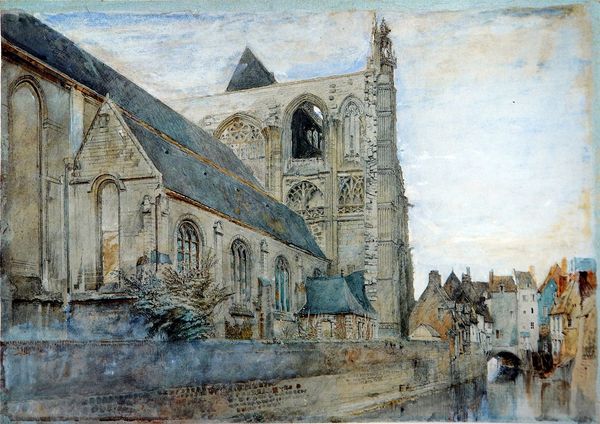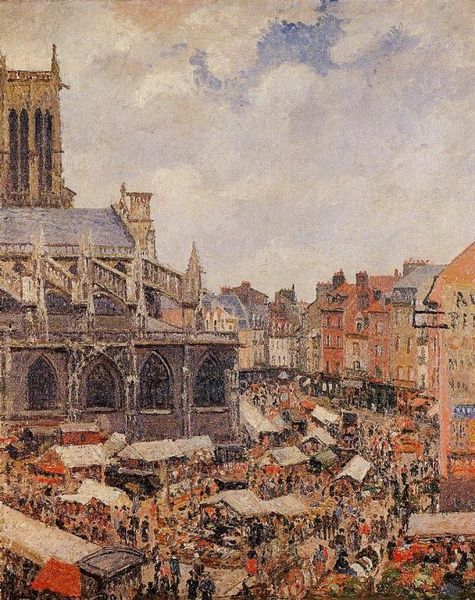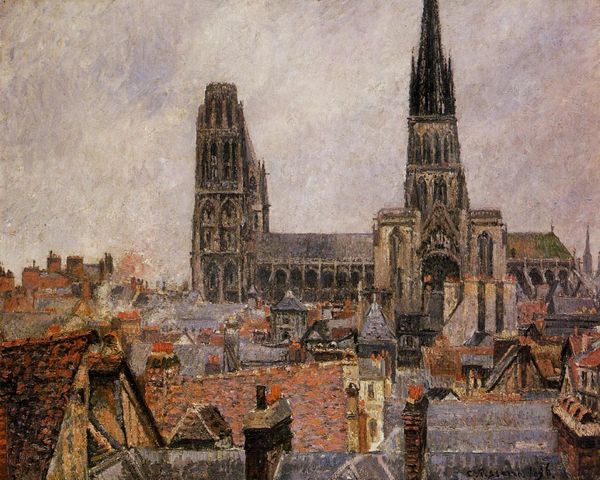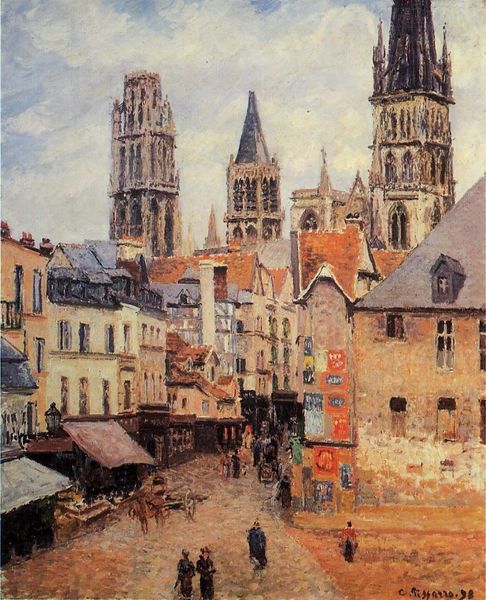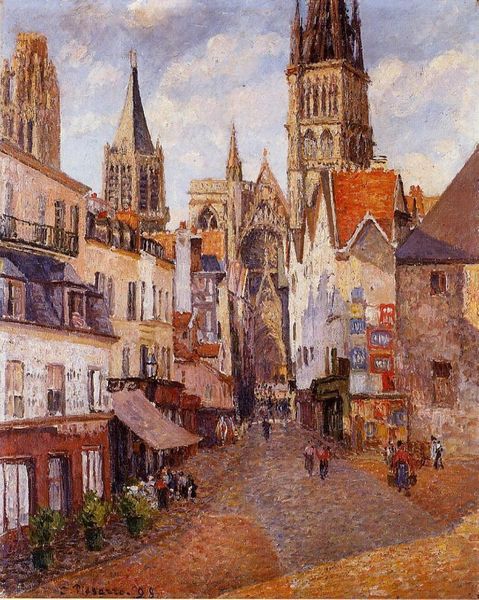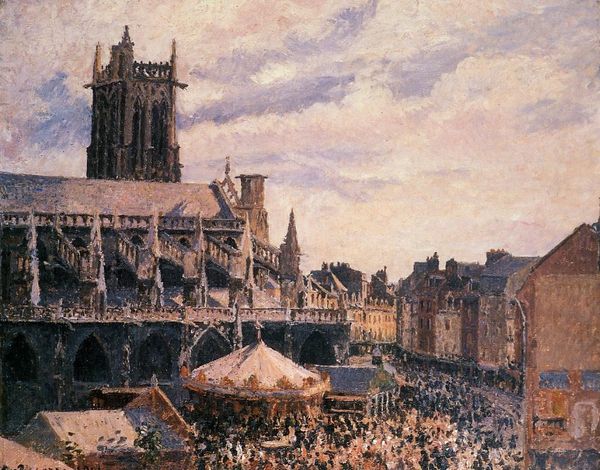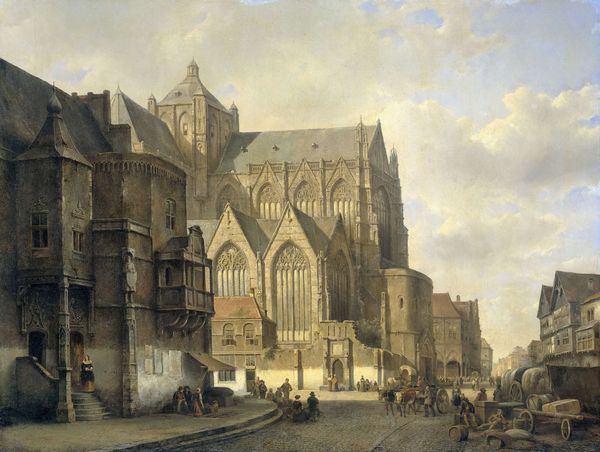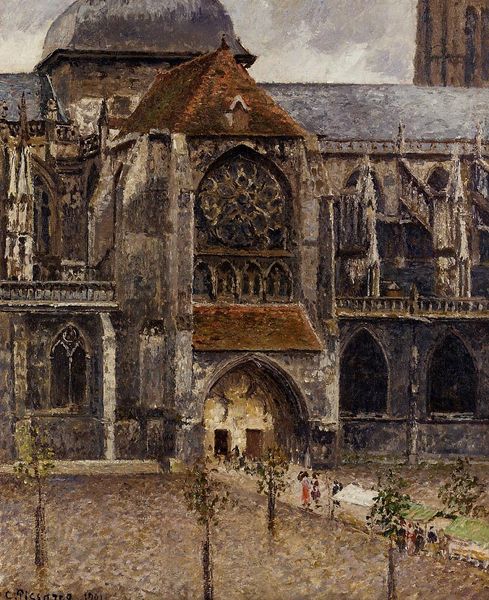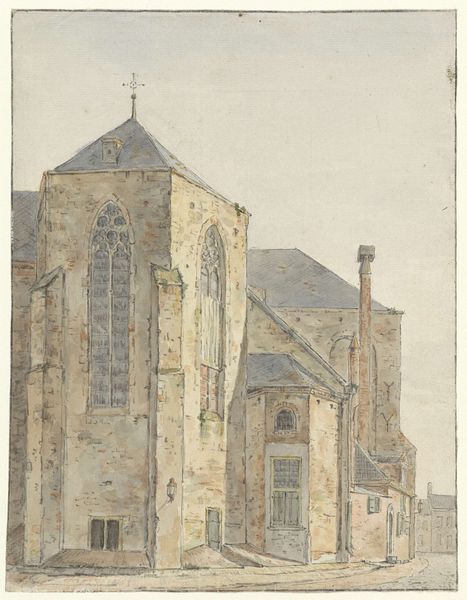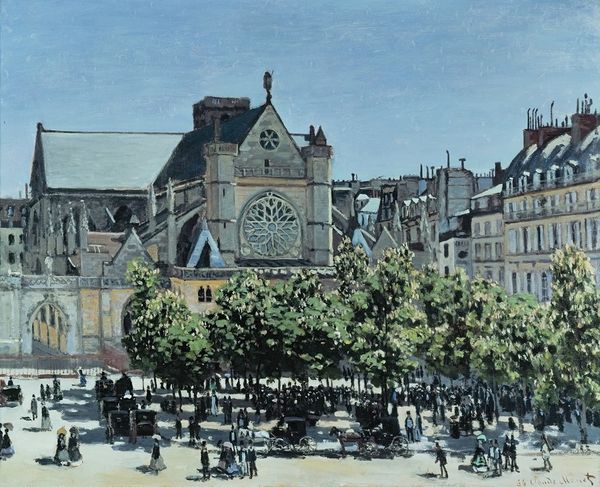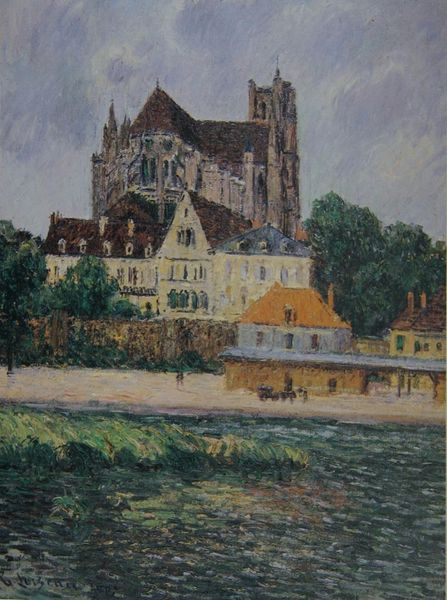
Dimensions: 81 x 65 cm
Copyright: Public domain
Curator: Standing before us is Camille Pissarro's "The Church of Saint Jacques, Dieppe, Rainy Weather," completed in 1901. It's an oil on canvas, showcasing his signature Impressionist style. What are your initial impressions? Editor: Immediately, I’m struck by the mood—somber, yet bustling. The grey tones create this wonderfully diffused light, almost melancholic. And despite the 'rainy weather,' there’s a distinct energy from the visible crowds and activity in the square. Curator: Absolutely. Pissarro painted this from a hotel window, which allowed him to capture the bustling urban scene below. It speaks to the burgeoning city life of Dieppe at the turn of the century. The cathedral becomes almost a backdrop to the everyday rhythms of the marketplace. Editor: The cathedral looms large. Churches often act as an anchor. Pissarro plays with the symbolic weight of the Church juxtaposed with these temporary, market stalls, almost highlighting a contrast between the eternal and the everyday, a dance between the sacred and the mundane. Curator: And consider Pissarro’s own political leanings. As an anarchist, he often depicted scenes that implicitly critiqued established institutions. By positioning the church within the larger context of urban life, and, in a way, dwarfing it, he seems to be commenting on its role in modern society. Editor: Fascinating! Visually, he seems to emphasize the people with this looser, more vibrant brushwork compared to the architectural details of the cathedral, suggesting a preference, or a direction of attention, perhaps, that challenges conventional visual hierarchies. Curator: That's insightful. Pissarro challenges the artistic traditions of history painting, moving the focus from idealized portrayals of historical events to a gritty depiction of modern life. It really grounds our understanding of society through its ordinary elements. Editor: For me, that blurring, Impressionist touch only adds layers to ponder; Pissarro understood how potent even an ephemeral image could be—he wasn't just painting what he saw but what he felt. A cultural mirror held up to his present that offers us a look into our past. Curator: Indeed. This painting reveals Pissarro’s unique ability to blend social commentary with artistic innovation. Editor: Yes, and to imbue a rainy cityscape with enduring significance, that reverberates beyond its immediate historical moment.
Comments
No comments
Be the first to comment and join the conversation on the ultimate creative platform.

